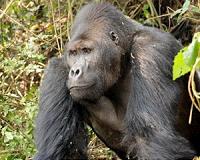 |
Davis CA (SPX) Apr 19, 2011 Stephen Spielberg's movie Jurassic Park got one thing right. Velociraptors hunted by night while big plant-eating dinosaurs browsed around the clock, according to a paper on the eyes of fossil animals published on-line this week in Science Express. That overturns the conventional wisdom that dinosaurs were active by day while early mammals scurried around at night, said Ryosuke Motani, a geologist at the University of California at Davis, and a co-author of the paper. "It was a surprise, but it makes sense," Motani said. It's also providing insight into how ecology influences the evolution of animal shape and form over tens of millions of years, according to Motani and collaborator Lars Schmitz, a postdoctoral researcher at UC Davis. "These authors' conclusion that these dinosaurs were active diurnally and nocturnally challenges a general dogma--that nocturnality in that time was mostly restricted to mammals," says H. Richard Lane, program director in the National Science Foundation (NSF)'s Division of Earth Sciences, which funded the research. Motani and Schmitz worked out the dinosaurs' daily habits by studying their eyes. Dinosaurs, lizards and birds all have a bony ring called the "scleral ring" in their eyes, although this is lacking in mammals and crocodiles. Schmitz and Motani measured the inner and outer dimensions of this ring, plus the size of the eye socket, in 33 fossils of dinosaurs, ancestral birds and pterosaurs--and in 164 living species. Day-active, or diurnal animals have a small opening in the middle of the ring while the opening is much larger in nocturnal animals. Cathemeral animals--active in both day and night--tend to be in between. But the size of these features is also affected by ancestry. For example, two closely related animals might have similar eye shape even if one is active by day and the other by night: the shape of the eye is constrained by ancestry, and that could bias the results. Schmitz and Motani developed a computer program to separate the "ecological signal" from this "phylogenetic signal." The results of that analysis are in a separate paper published simultaneously in the journal Evolution. By looking at a 164 living species, they could confirm that the eye measurements were accurate in predicting whether animals were active by day, by night or around the clock. Then they applied the technique to fossils, including plant-eating and carnivorous dinosaurs, flying reptiles called pterosaurs and ancestral birds. The big plant-eating dinosaurs were active day and night, probably because they had to eat most of the time, except for the hottest hours of the day when they avoided overheating. Modern megaherbivores like elephants show the same activity pattern, Motani said. Velociraptors and other small carnivores were night hunters. Schmitz and Motani were not able to study big carnivores such as Tyrannosaurus rex, because there are no fossils with sufficiently well-preserved eyes. Flying creatures, including early birds and pterosaurs, were mostly day-active, although some of the pterosaurs--including a filter-feeding animal that probably lived like a duck, and a fish-eating pterosaur--were apparently night-active. "This strongly suggests that ecology drives activity," Schmitz said. By separating out the effects of ancestry, researchers now have a tool to understand how animals lived in their environment and how changes in the environment influenced their evolution over millions of years, Motani said. The work was also funded a postdoctoral fellowship from the German government (DFG).
Share This Article With Planet Earth
Related Links University of California at Davis Darwin Today At TerraDaily.com
 Recent Census In DR Congo Finds Gorillas Have Survived
Recent Census In DR Congo Finds Gorillas Have SurvivedWashington DC (SPX) Apr 19, 2011 A census team led by the Wildlife Conservation Society and the Insitut Congolais pour la Conservation de la Nature (ICCN) in Kahuzi-Biega National Park in the Democratic Republic of Congo has announced some encouraging news from a region plagued by warfare and insecurity: a small population of Grauer's gorillas has not only survived, but also increased since the last census. The census, co ... read more |
|
| The content herein, unless otherwise known to be public domain, are Copyright 1995-2010 - SpaceDaily. AFP and UPI Wire Stories are copyright Agence France-Presse and United Press International. ESA Portal Reports are copyright European Space Agency. All NASA sourced material is public domain. Additional copyrights may apply in whole or part to other bona fide parties. Advertising does not imply endorsement,agreement or approval of any opinions, statements or information provided by SpaceDaily on any Web page published or hosted by SpaceDaily. Privacy Statement |